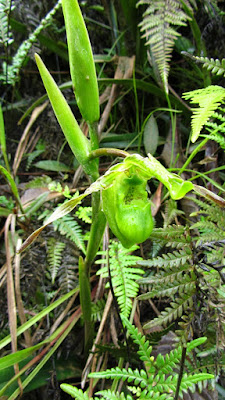Phragmipedium boissierianum is native to Ecuador and Peru, at an altitude of 625-1100 m. In the area of Tingo Maria (Peru), they occurs in the valleys between two ridges, on slopes directed to the southwest, where there are permanent watercourses...
Phragmipedium boissierianum also called as Boissier's Phragmipedium, Cypripedium boissierianum, Cypripedium grandiflorum, Paphiopedilum boissierianum, Phragmipedium cajamarcae, Phragmopedilum boissierianum, Phragmopedilum cajamarcae, Selenipedium boissierianum, is a species of the genus Phragmipedium. This species was described by Robert Allen Rolfe in 1896.
IDENTIFY PHRAGMIPEDIUM BOISSIERIANUM
Phragmipedium boissierianum is native to Ecuador and Peru, at an altitude of 625-1100 m. In the area of Tingo Maria (Peru), they occurs in the valleys between two ridges, on slopes directed to the southwest, where there are permanent watercourses. In other areas, they are also found growing on grassy, rarely covered with bushes clay slopes and fertile black loams near the jungle edge.
It is a medium sized, cool to warm growing, fan-shaped terrestrial orchid, which reaching 152 cm in size, with no pseudobulbs, lorate, acute, distichous, imbricating, dark green, glossy, conduplicate below into the base, 64-76 cm long leaves.
Boissier's Phragmipedium blooms on a 60 to 90 cm long, erect, dark brown purple to maroon inflorescence with 4 to 6 distant bracts carrying 3 to 15, successively opening flowers occurring in the fall through spring. The flower is 15 cm long. The inner whorl of 10-13 cm is twisted, curled and horizontally distributed. The flowers are light yellow-green to dark green with darker, emerald-green veins, and the petals of both whorls have white edges. The lateral outer petals are curled and undulated, and the ridge petal has twisted edges.
PHRAGMIPEDIUM BOISSIERIANUM CARE AND CULTURE
Cultural information should only be used as a guide, and should be to be adapted to suit you. Your physical location; where you grow your plants, how much time you have to devote to their care, and many other factors, will need to be taken into account. Only then can you decide on the cultural methods that best suit you and your plants.
Light:
Phragmipedium boissierianum needs a light level of 24000 lux. It is recommended that scattered light is used because in a natural habitat, cloudless days are rare. The level of light can be gradually increased until the leaves begin to take on a yellow color.
Temperature:
Throughout the year, the average temperature of the day is 29-31 ° C, and the night 17-19 ° C, which gives a daily difference of 11-13 ° C.
Humidity:
Boissier's Phragmipedium needs the humidity of 80-90% throughout the year.
Substrate, growing media and repotting:
Phragmipedium boissierianum requires a substrate that is fast drying but requires a part of the moisture is necessary. Repotting is best done after flowering, when new roots begin to grow.
Watering:
The plants should be moist throughout the year. Schedule of precipitation is wet / very wet.
Fertilizer:
In the growing season, it is recommended to weekly or every 2 weeks use 1/4-1/2 doses of fertilizer for orchids.
Rest period:
The average temperatures above should be maintained throughout the year. In winter, water, humidity and fertilization should be reduced, while the level of light can be higher, simulating a greater number of sunny days.















COMMENTS